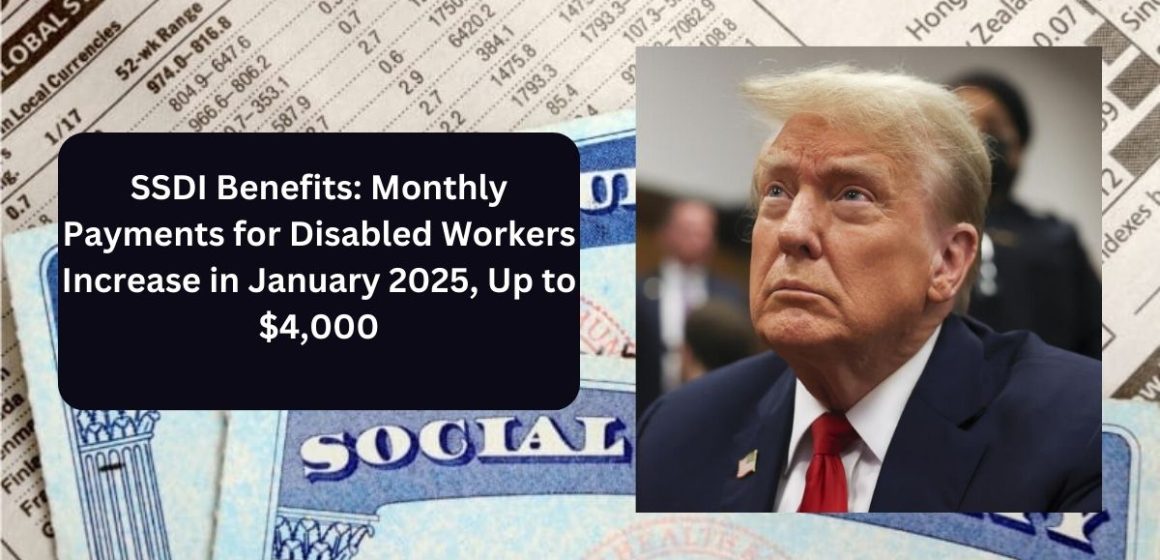For those who cannot perform jobs due to a health condition or disability, two main federal programs offer assistance: Social Security Disability Insurance (SSDI) and Supplemental Security Income (SSI). The fundamental difference between these programs lies in the applicant’s work history, which influences the benefits they can receive.
SSDI is intended for individuals who have worked and paid Social Security taxes for a significant period, but who now face a disability that prevents them from continuing to work.
In contrast, SSI focuses on offering support to low-income people who have little or no work history and who are also unable to work due to medical conditions. Both programs are managed by the Social Security Administration (SSA), to provide financial assistance to a diverse set of beneficiaries.
Monthly Benefits and Comparison Between Programs
SSDI recipients receive an average monthly payment of $1,483.10, although the maximum projected benefit for 2024 could reach $3,822.
On the other hand, SSI payments are considerably lower, averaging close to $600.74 per month and capping at $943 for the same year. Although these amounts may offer a degree of relief, they often do not cover the basic costs of living in various locations in the United States.
A study by Atticus notes that SSDI payments typically cover less than 50% of recipients’ living costs, while SSI only covers about a third. These data, reflected in figures such as the approximately 7.9 million disabled workers who received SSDI benefits in 2022, underscore the importance of understanding the limitations of these assistance programs.
Calculating SSDI Payments
The Social Security Administration establishes SSDI benefits by looking at the 35 years in which a person earned the highest income and adjusting those values for inflation. Subsequently, specific percentages are applied to calculate the Primary Insurance Amount (PIA) which defines the amount that beneficiaries will receive.
For the year 2024, the formula used includes 90% for the first $1,174 of earnings, 32% for earnings between $1,174 and $7,078, and 15% for earnings above $7,078. This method ensures that those with lower earnings over their working lives receive a greater proportion of their income as SSDI benefits.
Annual Changes in SSDI Payment
The Social Security Administration reviews SSDI benefits annually to reflect changes in the Cost of Living Adjustment (COLA). The Department of Labor determines the COLA using the Consumer Price Index for Urban Wage and Administrative Workers (CPI-W), which measures the variation in prices of goods and services consumed by households.
When the CPI-W shows an increase, indicating inflation, the COLA increases to allow beneficiaries to adjust their income to the cost of living. For 2024, the COLA was set at 3.2%, meaning SSDI recipients received a 3.2% increase in their monthly payments. As a result, the average SSDI payment will increase to $1,537 per month, while the projected maximum benefit will rise from $3,627 to $3,822.
SSDI Payment Dates for January 2025 are Three
Social Security Disability Insurance (SSDI) payments are distributed according to the beneficiary’s day of birth. Generally, payments are made on the second, third, or fourth Wednesday of the month, depending on the date of birth. By January 2025:
- If your date of birth is between the 1st and the 10th, you will receive the payment on Wednesday, January 8.
- If your date of birth is between the 11th and the 20th, you will receive the payment on Wednesday, January 15.
- If your date of birth is between the 21st and the 31st, you will receive the payment on Wednesday, January 22.
If you have not received your SSDI payment, the SSA recommends waiting at least three business days to rule out any problems in the banking process. You should also check that your bank account is working correctly.
If after reviewing all of this you still have not received your payment, contact the SSA. You can call them at 1-800-772-1213. Have your social security number and any other relevant information on hand so they can assist you more effectively.



Leave a Reply